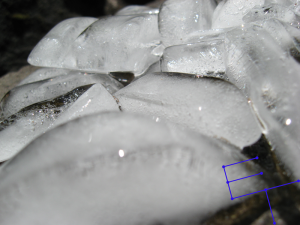Happy Holidays to all our wonderful friends and family from Nick Rinard Physical Therapy. We hope that everyone is enjoying this holiday to rest, recover and enjoy time with all your loved ones.
Nick Rinard Physical Therapy will be closed from Dec. 23, 2022 to Dec. 26st 2022.
Please feel free to email help@RinardPT.com or call 503-244-6232 for any needs you may have and someone will be in the office to give you a call back.
More
By Megan Plante, DPT
29 Aug, 2014
Physical Therapy Tips
car accident, debate, education, healing, MVA, Physical Therapy, rest, ROM, training
 This is a question that seems to be in debate. At our clinic, we advise our patients to come in for treatment as soon as possible when experiencing pain in order for the fastest results. I have experienced push-back from other health care practioners who want the person to “rest” for 4-6 weeks before starting therapy. The problem with this? There are many things a person can be doing immediately after the MVA to facilitate healing and prevent dysfunction. All too often, we see people 6 months or longer after the MVA. If the patient has not been given anything to work on for exercises at home, the picture is this: limited, painful movement of the spine or joint, global weakness, and poor posture that becomes painful if corrected.
This is a question that seems to be in debate. At our clinic, we advise our patients to come in for treatment as soon as possible when experiencing pain in order for the fastest results. I have experienced push-back from other health care practioners who want the person to “rest” for 4-6 weeks before starting therapy. The problem with this? There are many things a person can be doing immediately after the MVA to facilitate healing and prevent dysfunction. All too often, we see people 6 months or longer after the MVA. If the patient has not been given anything to work on for exercises at home, the picture is this: limited, painful movement of the spine or joint, global weakness, and poor posture that becomes painful if corrected.
What does therapy look like in the first few weeks after an MVA?
- Initiate gentle range of motion exercise to prevent loss of movement
- Manual techniques including passive range of motion and soft tissue mobilization to promote blood flow and healing.
- Ultrasound modalities that decrease inflammation/swelling and promote tissue healing</li class=”rinardptli”>
- Education and training on how to prevent dysfunction
Here at Nick Rinard Physical Therapy, we see a lot of patients who have suffered an MVA. In fact, we see it so much we have a protocol for it that is very successful for treatment. Don’t wait! Start healing and feeling better today!
More
‘R.I.C.E.’ Coined in 1978
‘R.I.C.E.’ (rest, ice, compression, elevation) was coined in 1978 by Dr. Gabe Mirkin. Since then, ice has been the standard treatment for injuries and sore muscles. The RICE guidelines have been used for decades, but it now appears that ice and rest may delay healing.
Scientific Articles Don’t Support Ice for Healing
 A study from The American Journal of Sports Medicine, June 2013 asked athletes to exercise intensely enough to develop muscle damage that caused extensive muscle soreness. It was found that icing delayed swelling, but did not quicken the healing process. A summary of 22 scientific articles found little to no evidence supporting that ice and compression facilitate healing over compression alone.
A study from The American Journal of Sports Medicine, June 2013 asked athletes to exercise intensely enough to develop muscle damage that caused extensive muscle soreness. It was found that icing delayed swelling, but did not quicken the healing process. A summary of 22 scientific articles found little to no evidence supporting that ice and compression facilitate healing over compression alone.
Inflammation
Inflammation is required for healing. Inflammation is a part of our immune system and is essential in the healing process. Inflammatory cells migrate to the injured tissue to start the healing process. Macrophages (inflammatory cells) release a hormone into injured tissues, which helps muscles and other injured tissues heal. Applying ice to reduce swelling can delay healing by preventing the body from releasing this hormone.
Icing can also prevent healing cells from entering the injured tissues by constricting blood-flow. It can take hours for the blood vessels to return to their size. Icing can also decrease strength, speed, endurance and coordination.
General Tips for Using Ice
If you’re going to ice, only apply ice for 10-15 minutes at a time. Utilize ice for the first day of injury. Seek medical attention from a mechanical physical therapist if the pain is severe or you cannot actively move a body part.
More


